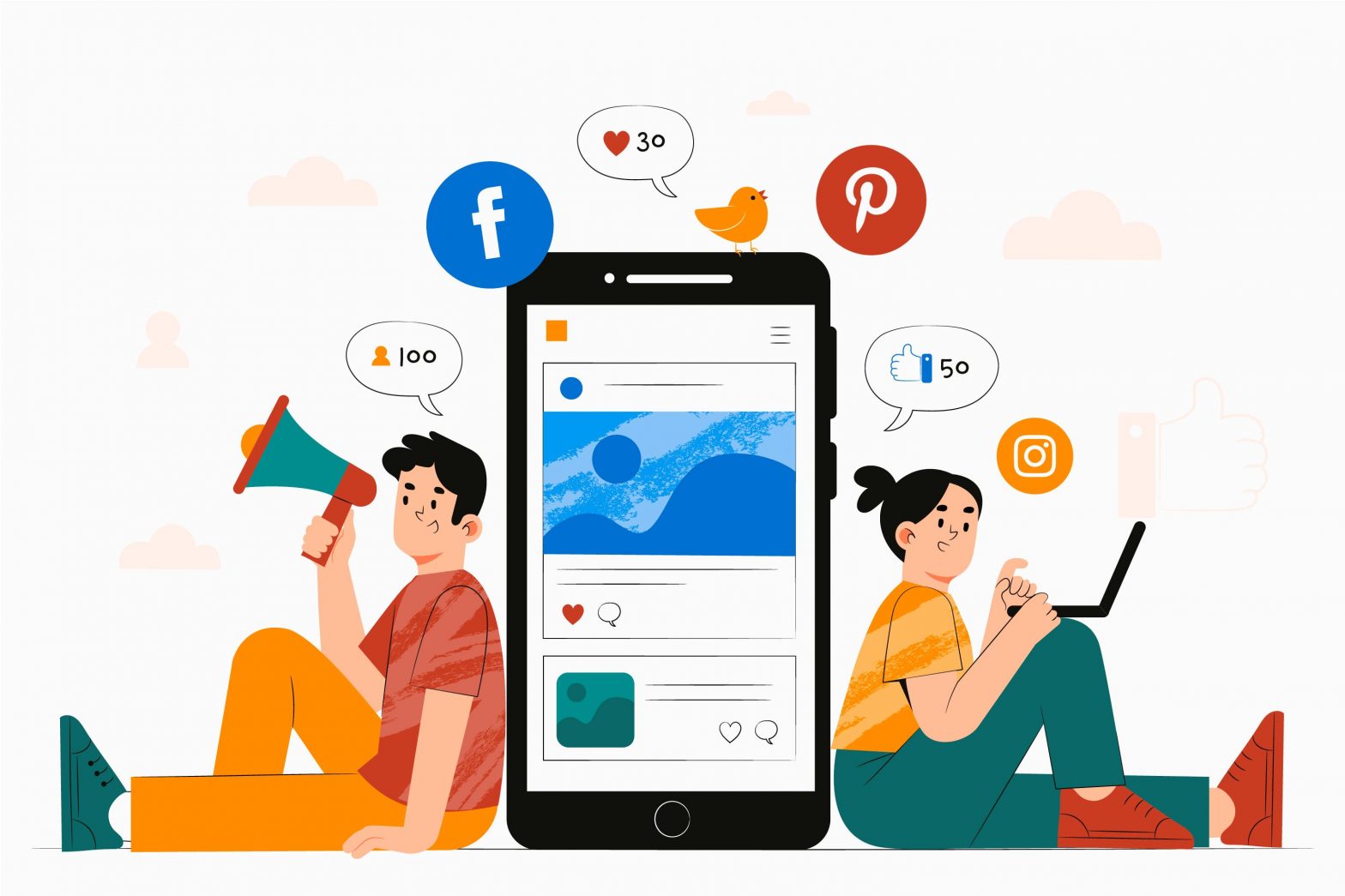Social Media Advertising
Social Media Advertising refers to the use of social media platforms to promote products, services, or brands. It’s an essential part of digital marketing, allowing businesses to target specific audiences, increase brand visibility, and drive conversions. Social media ads are typically paid campaigns that appear on platforms like Facebook, Instagram, Twitter, LinkedIn, TikTok, Pinterest, Snapchat, and YouTube.

Key Elements of Social Media Advertising:
- Targeting and Segmentation: One of the biggest advantages of social media advertising is its targeting capabilities. Advertisers can target users based on various factors, including:
- Demographics (age, gender, income, etc.)
- Location
- Interests and behaviors
- Past interactions with the brand (retargeting)
- Device usage and online activity
- Ad Formats: Social media platforms offer a variety of ad formats, such as:
- Image Ads: Static or carousel images showcasing products or services.
- Video Ads: Short or long videos promoting products, brand stories, or tutorials.
- Story Ads: Vertical full-screen ads on platforms like Instagram and Facebook that appear in between user stories.
- Sponsored Posts: Native ads that blend into users’ feeds, appearing as regular content but marked as “sponsored.”
- Text Ads: Simple text-based ads typically seen on platforms like Twitter or LinkedIn.
- Influencer Partnerships: Collaborating with social media influencers who promote your products/services to their audience.
- Metrics and Analytics: Tracking and measuring the performance of social media ads is crucial for refining strategies. Some common metrics include:
- Click-Through Rate (CTR)
- Conversion Rate
- Return on Ad Spend (ROAS)
- Engagement Rate (likes, comments, shares)
- Cost per Click (CPC) or Cost per Thousand Impressions (CPM)
- Budgeting: Social media platforms generally work on a pay-per-click (PPC) or pay-per-impression (CPM) model. Advertisers set a budget and bid for ad space, and the platforms use algorithms to determine ad placement based on targeting, relevance, and bid price.
- Platforms for Advertising:
- Facebook & Instagram: Offer advanced targeting, in-feed ads, story ads, carousel ads, and more. Great for both B2C and B2B.
- Twitter: Good for real-time updates and promotions, with options for trend-based advertising and sponsored tweets.
- LinkedIn: Ideal for B2B marketing, providing professional audience targeting and job-focused content.
- TikTok: Known for its creative video ads and its appeal to younger audiences.
- YouTube: Offers video ads that can appear before, during, or after videos, or even as display ads on the platform.
- Pinterest: Provides a visual-centric platform perfect for lifestyle, fashion, and DIY brands.
- Snapchat: Known for interactive and immersive ad experiences, especially with a younger demographic.
Benefits of Social Media Advertising:
- Wide Reach: Billions of users across social platforms make it a perfect channel for broadening your reach.
- Cost-Effective: With proper targeting, you can achieve a high ROI even on a limited budget.
- Enhanced Engagement: Social platforms allow brands to connect directly with their audience, resulting in better customer relationships and loyalty.
- Real-Time Feedback: Social media campaigns provide instant insights, enabling marketers to adjust strategies quickly.
Challenges:
- Competition: Many businesses are vying for user attention, which can drive up advertising costs.
- Platform Algorithm Changes: Social media platforms frequently adjust their algorithms, which can impact ad reach and effectiveness.
- Ad Fatigue: Users may become desensitized to ads over time, requiring fresh and creative approaches.
Best Practices:
- Know Your Audience: Tailor your content and messaging to your audience’s preferences and behavior.
- Visual Appeal: Use eye-catching and high-quality visuals to capture attention.
- Clear Call to Action (CTA): Make sure your ad includes a clear, compelling call to action.
- Test and Optimize: Continuously test ad elements (copy, images, formats) to improve performance.
- Leverage User-Generated Content: Encourage users to create content that promotes your brand to enhance authenticity and trust.
Social media advertising is a powerful tool for businesses looking to connect with their target audiences and achieve measurable marketing success.